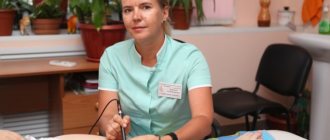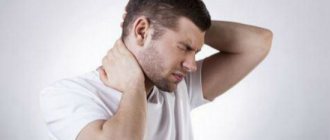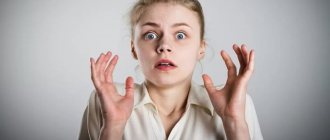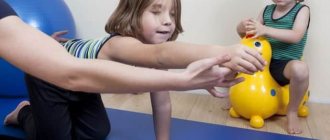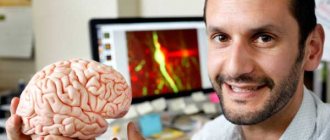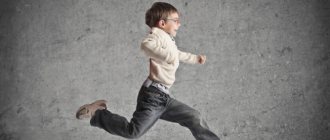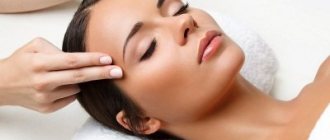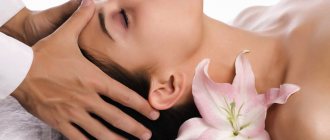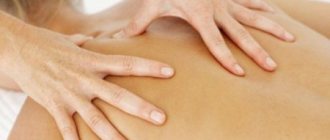The benefits of massage treatments for cerebral palsy
When diagnosed with cerebral palsy, massage is prescribed only by neurologists for:
- normalization of motor function and increased muscle tone;
- improving muscle conductivity;
- improving the movement of biological fluids;
- preventing restrictions on passive movements in joints;
- normalization of metabolic processes;
- improvement of general condition.
During the procedures, the impact occurs in such a way that tense muscles relax, and weak ones are activated and put into work . Due to active blood circulation, muscle mass begins to increase, and the normalization of metabolic processes has a positive effect on the functioning of internal organs.
When performing massage procedures, you must take into account:
- individual characteristics of the disease and the patient’s condition;
- preliminary medical or physiotherapeutic procedures;
- Exercise therapy exercises prescribed after the session for cerebral palsy.
Usually during the session they use bright and soft toys and relaxing music. And all procedures are carried out from a lying position. The feet, fingers and hands can be additionally fixed depending on the child’s condition. Additionally, massage therapists use various pillows and rollers.
What is cerebral palsy
Cerebral palsy is a disease expressed in impaired motor activity, the cause of which is damage or pathology of the subcortical structures of the brain, which are responsible primarily for voluntary or involuntary movements, and secondly for the functioning of internal organs, and partly for thinking.
Thinking disorders occur only in 30% of cases; it is caused, for the most part, by the child’s physical inability to independently understand the world around him, and, therefore, to develop correctly without the help of parents or loved ones.
A child can get this chronic disease for various reasons, as well as its consequences and manifestations. Cerebral palsy in children is most likely not an independent disease, but a whole complex of various ailments with similar symptoms due to brain damage, which most often occurs in early childhood or in the womb, but which is not alien to adults.
It is impossible to completely cure this disease at the current level of technological development, since the brain is not a regenerating organ; moreover, its individual tissues are unable to regenerate, although partial recovery is possible at an early age with proper treatment. However, it is quite possible to remove most of the consequences of this disease with the help of well-chosen restorative therapy, which requires a lot of time with a lot of effort from both the patient himself and his loved ones, but meanwhile ultimately allows him to live a more or less full independent life , without depending on the mercy of others, or at least will greatly alleviate the manifestations of the disease, and also improve the patient’s condition in the most severe cases.
Contraindications
Massage is not performed if:
- acute form of allergy;
- acute heart failure;
- fungal skin lesions;
- infectious diseases;
- mechanical damage to the skin.
Contraindications for hardware massage also include inflammatory processes in internal organs and lymph nodes, and advanced forms of varicose veins (in adults).
Before using the oil, be sure to test for possible allergies, and the use of creams is always agreed with the attending physician.
When procedures cannot be performed
Under no circumstances is it recommended to carry out the procedure if the child has:
- Increased body temperature, fever;
- There are rashes on the skin of established or unidentified origin;
- For increased skin sensitivity;
- There is an exacerbation or complication of any disease.
The massage therapist is faced with the task of relaxing tense muscles and creating muscle tone.
There is a whole range of movements aimed at relaxing muscles of different groups. They must be used under the strict supervision of a specialist. It is important to be properly trained before massaging your baby. Only an experienced massage therapist will help you decide on a set of movements, time, and which muscle groups require increased attention. You need to understand that for the course to be successful, you must strictly follow all the specialist’s recommendations.
- We recommend reading: treatment of cerebral palsy in Israel
For effective treatment and rehabilitation, it is necessary not only to relax certain muscle groups, but also to tone them.
There are different movements that need to be selected with the help and guidance of an experienced specialist. Rate this article:
Massage techniques and techniques
The choice of massage technique, duration and intensity of the course, as well as the number of sessions per week is determined only by the attending physician. The doctor also selects a complex of several types of treatment procedures, which must be followed.
Relaxing and stimulating techniques
Massage procedures should be started immediately after the diagnosis is confirmed. Children with cerebral palsy are deprived of the ability to move normally, so sessions are aimed at strengthening weak and relaxing tense muscles.
Basic relaxation techniques include:
- all types of stroking;
- wallow;
- light pops and labile vibrations.
To stimulate muscle activity, use:
- deep stroking;
- rubbing with weights;
- kneading;
- sawing carried out with the edge of the palm.
If segmental massage is performed, then techniques are used to work the deep paravertebral muscles of the back.
Classical technique
The purpose of classical massage for cerebral palsy is to normalize muscle tone and improve the physical and psychological condition of the child. The procedure is carried out using classical massage techniques - stroking, kneading, rubbing and shaking, vibrating pats, and all movements should be smooth and not cause pain.
The session begins with massaging the neck, back, buttocks and thighs. The child is first placed on his stomach so that he is comfortable. Particular attention is paid to the subscapular region, because this area is weakened due to spasm of the pectoralis major muscle. After working on the back of the legs, the baby is turned onto his back. Work continues with the front surface of the legs, stomach, chest and arms.
In the presence of diplegia, a deeper impact on the joints is used. On the first day, only the back and legs are worked, the second session includes additional work on the stomach, chest and arms.
The classic technique for babies is used from the first months of life without any massage creams or oils. Cosmetics are allowed to be used only from 3-4 months. The course includes up to 20 procedures, each lasting about 60 minutes. After working, the baby is given 10-15 minutes to rest.
Speech therapy technique
You can perform speech therapy exercises and massages at home. The session begins with stroking from the central point of the forehead to the temples. Then the technique is performed above the eyebrows and from the bridge of the nose along the wings of the nose to the nostrils. Lightly rub along the chin and the area above the ears, and then stroke again from the corners of the mouth to the earlobes. Each technique is repeated 4 times, and massaging can be done up to 5 times a day.
For speech impairment
Speech therapy massage for cerebral palsy with speech impairment helps not only to relax the muscles, but also stimulates metabolic processes in tissues, increases the mobility of muscle fibers, and improves their conductivity.
Begin the session by pressing on the junction of the upper and lower jaws. Then they apply on the nasolabial fold, cheekbones and chin muscles.
Exercises with a toothbrush can be performed up to 5 times. First, it is passed along the edge of the tongue, drawing the letter U and Z, and then several circular movements are made. After this, draw the letter V on the surface of the tongue with your finger and brush along the edges again.
Benefits of massage
If parents want their child to maintain a normal lifestyle, they must take care of rehabilitation. All doctors recommend physical exercise and massage. These measures can reduce the manifestations of pathology, restore the functioning of the central nervous system and generally improve the child’s condition.
During the massage, the child will have the opportunity to quickly master his body. Therefore, it is important to complement physical exercise with massage in order to achieve the best results.
Of course, it will not be possible to completely restore damaged nerve cells in the brain. However, with proper treatment, it will be possible to achieve self-healing to some extent. Although regeneration of damaged tissue does not occur, new connections appear that will perform the functions of old neurons.
It is extremely important to improve local blood circulation through massage. In this situation, it will be possible to significantly increase the body’s defenses, normalize cell nutrition and gas exchange, and launch the regeneration of damaged areas in the brain. If you improve blood flow, then the production of hormones will significantly increase, and toxic substances will be eliminated faster.
It is important to use massage to rub the body to prevent the formation of adhesions and deposits on areas of the skin, muscles and tendons. Parents must ensure that their child with cerebral palsy receives a professional massage. The procedure can also be performed at home, but in this situation you will need to follow medical advice.
Bobath therapy: the essence of the method
Cerebral palsy (abbreviated as cerebral palsy) is an extensive symptom complex that combines motor, neurological, and brain disorders and occurs in the perinatal period (from any period of gestation to 4 weeks of the baby’s life).
The degree of impairment varies greatly and depends on the strength and duration of exposure to traumatic factors. The development mechanism is caused primarily by hypoxia, the death of neurons in certain areas of the brain. The disease often affects intellectual, physical and motor development, leads to mental disorders, pathologies of the organs of vision and hearing. Patients with cerebral palsy need lifelong rehabilitation, constant medication, sometimes surgical treatment, and physical therapy.
According to statistics, cerebral palsy accounts for 1.5-1.7% of cases per 1 thousand children born under 12 months; the risk increases with extreme prematurity of the baby. According to WHO, more than 50% of cases of cerebral palsy develop as a result of pathological and premature births, violations of obstetric care tactics in women in labor, and severe cerebral hypoxia.
REFERENCE. Cerebral palsy in children occupies a special place in pediatrics and child neurology, since every year the rate of those born with a neurological symptom complex only increases. This is due not only to general factors (ecology, lifestyle, pregnancy pathologies), but also to advances in neonatology, which make it possible to care for babies from 450-500 g and maintain their viability.
In the 50s of the last century, Czech professor Vaclav Vojta, who worked in a clinic with children with cerebral palsy, discovered a pattern of movements. The professor realized that when pressing certain points on the body, all people reflexively make exactly the same movements.
This discovery became the basis for the treatment method proposed by V. Vojta, which received its name from the name of the discoverer.
The mechanism of movement of the musculoskeletal system is driven by impulses coming from the spinal cord. However, these impulses will not “turn on” unless an incentive signal from the brain arrives at the spinal cord. In patients with cerebral palsy this connection is disrupted. However, Vojta discovered that it can be restored if one begins to set the algorithm for the operation of the motor mechanism “from the end”, i.e.
If a healthy person is born with unconditioned motor reflexes, then with the help of Vojta therapy a patient develops a conditioned reflex to every correct movement.
It is recommended to carry out the procedures 3-4 times a day. They are effective for both infants with cerebral palsy and preschoolers. The Voight method is also used in the treatment of school-age children, but adolescents are already less amenable to treatment.
Each lesson lasts from 5 minutes; their duration can be longer and gradually increase to half an hour. It must be taken into account that classes are stressful for the child, especially at the beginning. After all, their body itself makes movements regardless of their desires. Small children express all emotions exclusively by screaming, so even parents can be scared.
There are three areas of use of Vojta therapy: early diagnosis of newborns, treatment of motor disorders in sick children and rehabilitation of adults after a stroke. In the case of cerebral palsy, a new motor reflex is developed, which brings great benefits to patients. The Voight method does not train new correct movements, but “reminds” the body of the innate scheme embedded in the brain’s impulse transmission program.
The use of Vojta therapy is indicated for any degree of cerebral palsy, coordination disorders, and some concomitant diseases (epilepsy outside of seizures, hip dysplasia, impaired sucking, swallowing, chewing reflexes, problems with the spine). This method treats delays in motor, speech, and mental development, which also often accompanies cerebral palsy.
However, in some conditions the Voight method is contraindicated. These are ARVI, febrile conditions, acute pain in the heart, the postoperative period (until wound healing), diseases with increased bone fragility, exacerbation of chronic ailments.
Bobath therapy was developed by British doctors Bertha and Karl Bobath in the 40s of the twentieth century. Based on the observations of Bertha, who first trained as a gymnastics coach, the couple discovered the brain's ability to be plastic. It turned out that when certain areas of the brain are damaged, responsibility for their functions passes to healthy areas. This elimination of neurological deficit is especially pronounced in newborns.
You can start treatment with Bobath therapy at any age, but the younger the patient, the better. The greatest neurodevelopmental effect is achieved in infants up to 3 months of age.
Principles of treatment
Treatment using the Bobath method is called a whole philosophy, a system of patient care, and a way of life. It is based on the idea of movement therapy (kinesitherapy).
There are several basic principles on which this technique is based.
- Ontogenetic approach. This means that the restoration of motor skills occurs in the same sequence as the developmental stages of a healthy baby. He begins to hold his head up, roll over, sit up, crawl, etc. The doctor uses the same procedure to rehabilitate a child with cerebral palsy.
- Body positions are selected in which muscle hypertonicity is reduced.
- The quality of movements is more important than their quantity.
- Involvement of all motor points in targeted movement.
- The main goals are inhibition and facilitation, i.e. weakening and decreasing the number of involuntary movements and increasing coordinated movements.
- Smoothness of all movements.
Contraindications for Bobath therapy are schizophrenia, severe convulsive syndrome, severe forms of epilepsy. For milder forms of epilepsy, therapy is used with caution. Take breaks from classes during exacerbations of any chronic diseases.
The treatment plan is drawn up individually by a physiotherapist depending on the general condition of the patient, the form and degree of cerebral palsy.
The most commonly used exercises are:
- Straightening the neck, arms and legs while lying on your back.
- Lying on your stomach (a cushion is placed under your chest), arms bent, head raised. Rock and shake your arms and then move them forward.
- Inversion exercise: segmental rotation of the legs, pelvis and entire torso.
- Crawling on all fours, training to move limbs in the correct sequence, without unnecessary movements. At the same time, the position of the hands and the firmness of their support are controlled.
- Practicing correct posture. A cushion is placed between the thighs, the child is held by the arms, making sure that he does not fall to one side.
- Training in getting up and moving to a standing position.
These are the simplest exercises, but for a child with cerebral palsy they are quite difficult. Gradually the training program becomes more complicated. Exercises are added to strengthen the ability to stand upright and correct movements when walking.
Walking for a child with cerebral palsy is physiologically difficult, because it is a whole complex of movements. The child must learn to control the correct position of various parts of the body, not only the legs, but also the back, arms, and head.
Massage for children with cerebral palsy: rules of conduct
For cerebral palsy, various types of massage are prescribed. This can be a classic massage, relaxing acupressure, scleromeric massage technique to eliminate pain impulses. The development of antagonist muscles and their stretching are also used.
To start the session, you need to achieve muscle relaxation. Special oils can be used. The massage therapist usually uses the following types of movements:
- Slow, light, continuous stroking;
- rolling the muscles of the hip and shoulder joints;
- felting of large muscles;
- light rubbing with fingers;
- more vigorous rubbing of all the muscles of the back, thighs and buttocks.
Massage is often complemented by physiotherapeutic procedures: balneotherapy, mud and heat therapy, electrophoresis, magnetotherapy.
General recommendations
The procedure can be carried out either by a qualified specialist or by a relative of the patient at home. It is not difficult to learn this: during a lesson in a stationary environment, it is enough to observe the actions of a specialist, then try to repeat the movements at home.
During the procedure, certain areas can be stroked, pinched, kneaded and rubbed, and vibration movements can be used. In any case, only a doctor can determine the type of massage for cerebral palsy in adults and children, based on the individual characteristics of the disease.
There is no need to self-medicate or prescribe a course of therapy yourself. In this case, you can not only slow down recovery, but also cause additional harm to your health.
If the patient has increased sensitivity of the skin, it is advisable to use only acupressure, which does not involve kneading and rubbing large areas.
Before the procedure, you need to relax as much as possible and take the most comfortable position for yourself. Before the main movements, relaxing classical movements are performed. The procedure is prescribed in combination with other methods of treating cerebral palsy. Only an integrated approach to the treatment of the disease can achieve recovery.

